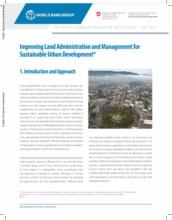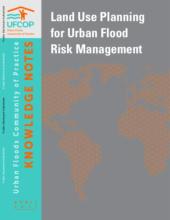Land Library
Bem-vindo à Biblioteca do Land Portal. Explore nossa vasta coleção de recursos de acesso aberto (mais de 74.000), incluindo relatórios, artigos de revistas científicas, trabalhos de pesquisa, publicações revisadas por pares, documentos jurídicos, vídeos e muito mais.
/ library resources
Showing items 37 through 45 of 5331.Much of the current analysis on agricultural productivity is hampered by the lack of consistent, high quality data on soil health and how it is changing under past and current management.
This paper uses unique data collected in rural Pakistan to assess the extent to which consanguinity, which is widespread in North Africa, Central and West Asia, and most parts of South Asia, is linked to child cognitive ability and nutritional status.
This policy note presents an analysis of and recommendations on the city competitiveness improvement and is part of a broader Philippines urbanization study. The analysis draws on the competitive city framework which includes four pillars: 1. institutions and regulations; 2.
This policy note assesses the performance of existing land administration and management (LAM) system in the Philippines in creating an environment for competitive cities.
This policy note discusses strengthening institutions for urban and metropolitan management and service delivery and is part of a broader Philippines urbanization study.
There have been few efforts to evaluate whether the positive land use changes induced by conservation interventions such as Payments for Environmental Services (PES) persist once the interventions end.
Land area of 3131.5451 hectares in Ou Chum district, Ratanakiri province has downsized from Forest Cover 2002 and reclassified as “State Private Land” for granting purpose as communal ownership to 4 Krung indigenous communities in Puy commune, Ou Chum district, Rattanakiri province.
The current state of knowledge on climate change and water points to predominantly negative effects. This paper reviews the literature on these effects by geographical region and notes the differences as well as the uncertainties.
This note offers policy makers and practitioners an overview of the key aspects of land use planning used to manage flood risks in cities across the world. It includes examples from developed and developing countries to provide insight into what has worked in different contexts.









